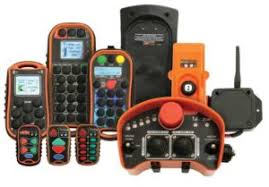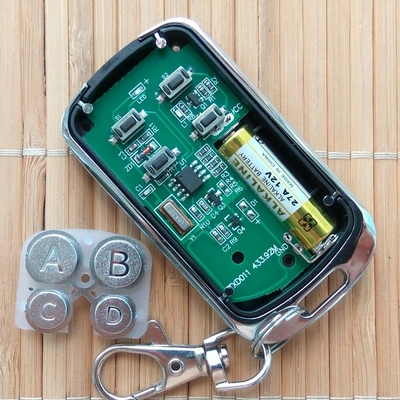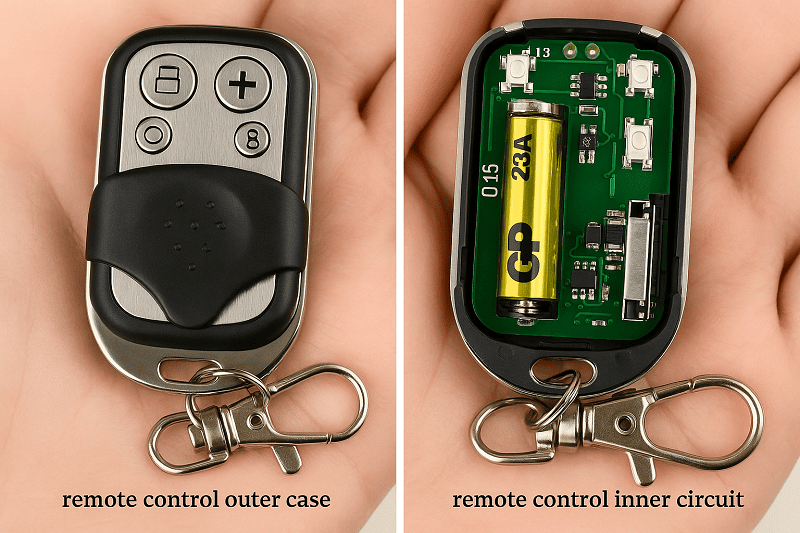RF-based remote control technologies refer to wireless systems that utilize radio frequency (RF) signals to control devices from a distance. Unlike infrared (IR) remote controls, which require a direct line of sight, RF-based controls can transmit signals through walls, furniture, and other obstacles, offering greater flexibility and range. These technologies are widely used in various applications, including home automation, industrial machinery, garage door openers, vehicle keyless entry systems, and more.

The use of radio waves for control purposes dates back to the early 20th century. One of the first documented uses of RF remote control was by Nikola Tesla, who demonstrated a radio-controlled boat in 1898. Over the decades, RF technologies have evolved from simple on/off signals to complex digital systems capable of bi-directional communication and secure data transmission. The development of standards such as Bluetooth, Zigbee, and Z-Wave has further expanded the capabilities and interoperability of RF remote control systems.
Basic Components
A typical RF remote control system consists of two main components: a transmitter and a receiver.
Transmitter: The transmitter is the handheld or embedded device that sends RF signals. It typically contains a microcontroller, an RF oscillator, an encoder, and an antenna. The microcontroller processes user input (e.g., button presses), the encoder converts this input into a coded signal, and the RF oscillator transmits the signal via the antenna.
Receiver: The receiver is connected to or embedded in the device being controlled. It includes an RF module, a decoder, a microcontroller, and an actuator or interface to the target device. The receiver captures incoming RF signals, decodes them, and executes the corresponding command (e.g., turning on a light, opening a door).
Modulation Techniques
RF signals are modulated to carry data. Common modulation techniques include:
On-Off Keying (OOK): A simple form of amplitude modulation where the presence or absence of a carrier wave represents binary data.
Frequency Shift Keying (FSK): Uses different frequencies to represent binary values.
Amplitude Shift Keying (ASK) and Phase Shift Keying (PSK): These methods encode data by varying amplitude or phase.
Modulation affects the reliability, range, and power consumption of the system. For example, FSK offers better noise immunity compared to OOK.
RF remote control systems typically operate in the Industrial, Scientific, and Medical (ISM) radio bands. Common frequencies include:
315 MHz (primarily in North America)
433 MHz (common in Europe and Asia)
868 MHz and 915 MHz (used for short-range devices)
2.4 GHz (used by Bluetooth, Wi-Fi, Zigbee)
The choice of frequency affects range, penetration, and regulatory compliance. Higher frequencies generally support faster data rates but have shorter range and poorer penetration.
Coding and Security
To prevent interference and unauthorized access, RF remote controls use coding techniques:
Fixed Code: A pre-defined binary code. It is simple but vulnerable to replay attacks.
Rolling Code: Changes with each transmission. It uses synchronized algorithms between the transmitter and receiver to generate unpredictable codes, enhancing security.
Encrypted Communication: Some advanced systems use encryption (e.g., AES) to secure data transmission, especially in critical applications like smart locks or car key fobs.

Universal RF remotes can emulate multiple devices. These remotes are often programmable or use learning features to duplicate the signal of other remotes. On the receiving end, universal receivers can interpret signals from a variety of transmitters using different protocols, making them ideal for use in multi-device environments.
Applications
RF-based remote control technologies are used across various industries:
Home Automation: Controlling lights, fans, thermostats, and entertainment systems.
Garage Door Openers: Among the most common uses, with rolling code systems to enhance security.
Security Systems: Wireless alarms, motion sensors, and camera activation.
Automotive: Keyless entry systems, remote start, and unlocking mechanisms.
Industrial Control: Operating cranes, machinery, and robotic systems from a safe distance.
Medical Devices: Wireless patient monitoring and device activation.

Advantages of RF Remote Controls
Extended Range: RF signals can travel up to hundreds of meters depending on power and environment.
No Line of Sight Required: Unlike IR, RF works through walls and obstructions.
Multi-Device Control: Ability to control multiple devices with a single remote.
Robust Against Interference: Especially with FSK and advanced coding.
Limitations and Challenges
Interference: RF signals can be affected by other devices operating on the same frequency.
Battery Consumption: Continuous transmission and higher processing can lead to quicker battery drain.
Security Vulnerabilities: Fixed code systems can be easily cloned without proper safeguards.
Regulatory Compliance: Different countries have different frequency regulations.
Future Developments
The future of RF remote control technologies lies in greater integration with the Internet of Things (IoT). Innovations include:
Cloud-Connected Remotes: Allowing global access and configuration.
Voice Integration: Combining RF with voice assistants like Alexa or Google Assistant.
Mesh Networking: As seen in Zigbee and Z-Wave, allowing devices to communicate through a mesh topology for extended range and reliability.
AI-Enhanced Control: Learning user preferences and automating device behavior.
Conclusion
RF-based remote control technologies have revolutionized wireless communication and control across many sectors. With advancements in modulation, coding, and connectivity, these systems continue to evolve, offering improved performance, security, and integration. As the demand for smart and connected devices grows, RF remote control systems will remain a key component of modern automation and convenience.